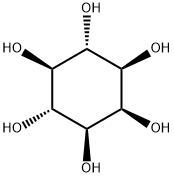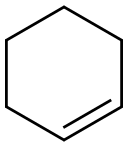Inositol , 10mMinDMSO , 87-89-8
Synonym(s):
myo-Inositol;ELISA;Hexahydroxycyclohexane, Cyclohexanehexol, meso-Inositol, Myo-Inosit;i-Inositol;meso-Inositol
CAS NO.:87-89-8
Empirical Formula: C6H12O6
Molecular Weight: 180.16
MDL number: MFCD00077932
EINECS: 201-781-2
| Pack Size | Price | Stock | Quantity |
| 1ml | RMB159.20 | In Stock |
|
| others | Enquire |
PRODUCT Properties
| Melting point: | 222-227 °C (lit.) |
| Boiling point: | 232.96°C (rough estimate) |
| Density | 1.75 |
| vapor density | 6.2 (vs air) |
| refractive index | 1.6170 (estimate) |
| storage temp. | 2-8°C |
| solubility | H2O: 0.5 M at 20 °C, clear, colorless |
| pka | 12.63±0.70(Predicted) |
| form | Crystalline Powder |
| color | White |
| PH | 5-7 (100g/l, H2O, 20℃) |
| Odor | odorless |
| Water Solubility | 14 g/100 mL (25 ºC) |
| Merck | 14,4978 |
| BRN | 1907328 |
| Stability: | Stable. Combustible. Incompatible with strong oxidizing agents. |
| InChIKey | CDAISMWEOUEBRE-GPIVLXJGSA-N |
| LogP | -2.08 |
| CAS DataBase Reference | 87-89-8(CAS DataBase Reference) |
| NIST Chemistry Reference | Hexahydroxycyclohexane(87-89-8) |
| EPA Substance Registry System | myo-Inositol (87-89-8) |
Description and Uses
Inositol (hexahydroxycyclohexane) is a widely distributed natural constituent of plant and animal tissues. The animal tissues richest in inositol are brain, heart, stomach, kidney, spleen, and liver, where it occurs free or as a component of phospholipids. Among plants, cereals are rich sources of inositol, particularly in the form of polyphosphoric acid esters, called phytic acids. Although there are several possible optically active and inactive isomers, considerations of inositol as a food additive refer specifically to optically inactive cis-1,2,3,5-trans-4,6-cyclohexanehexol, which is preferably designated myo-inositol. Pure inositol is a stable, white, sweet, crystalline compound. The Food Chemicals Codex specifies that it assay not less than 97.0 percent, melt between 224 and 227°, and contain not more than 3 ppm arsenic, 10 ppm lead, 20 ppm heavy metals (as Pb), 60 ppm sulfate, and 50 ppm chloride. Inositol was thought for a time to be a vitamin because experimental animals on a synthetic diet developed clinical signs that were corrected by inositol supplementation. However, no cofactor or catalytic function for inositol has been found; it can be synthesized and occurs in relatively high concentration in animal tissues. These factors argue against its classification as a vitamin. A dietary requirement in man has not been established.
A growth-factor and structural element of secondary messengers in eukaryotic cells
Safety
| Symbol(GHS) |  GHS07 |
| Signal word | Warning |
| Hazard statements | H317-H319-H412 |
| Precautionary statements | P261-P273-P280-P333+P313-P337+P313-P362+P364 |
| Safety Statements | 22-24/25 |
| WGK Germany | 2 |
| RTECS | NM7520800 |
| TSCA | Yes |
| HS Code | 29061390 |



